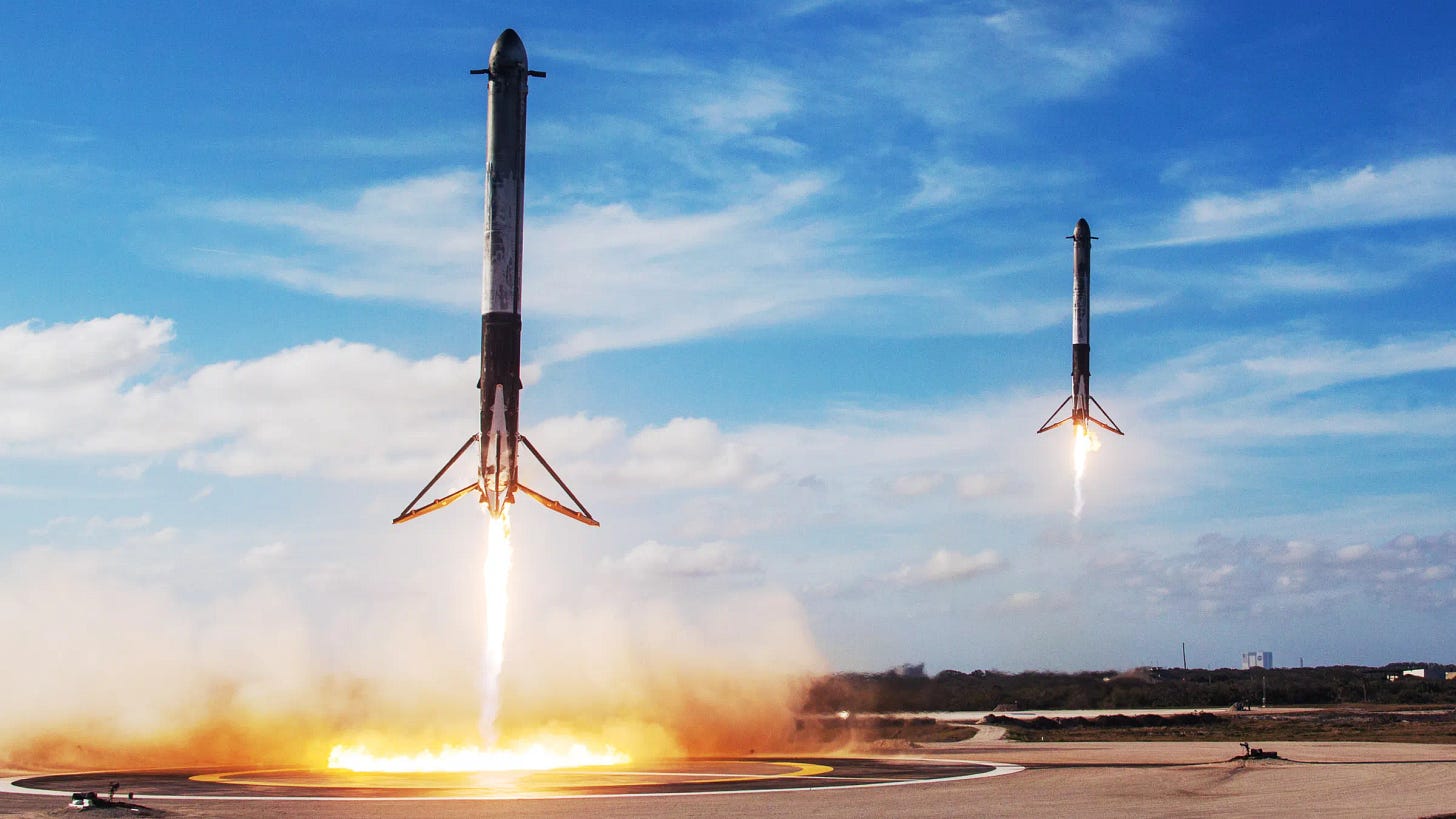Robert Zubrin notes that the cost of space launch was absolutely stagnant from 1970 to 2010 for 40 years at $10,000 a kilogram ($4,545 a pound). In the past 10 years, by introducing increasing degrees of reusability in their Falcon launch systems, SpaceX has cut the cost by 80 percent to $2,000 a kilogram ($909 a pound). We now get five for the price of one. Costs are decreasing around 15 percent a year making abundance increase 17.5 percent a year. At this rate, space travel abundance doubles every four years. An astonishing achievement.
Since June 2010, rockets from the Falcon 9 family have been launched 170 times, with 168 full mission successes. Every launch yields new knowledge. Learning Curves suggest that with each doubling of output cost fall between 20 to 30 percent. Musk in on a 19 percent learning curve. This is continuous innovation. But we can also enjoy punctuated innovation. Musk is now working on a vehicle called the Starship, which will have five times the payload capability of the Falcon 9, but even more importantly, be fully reusable. Both the first stage and the upper stage will be reusable. The price could fall to $400 a kilogram and eventually $200. ($181 to $91 a pound).
Musk’s other company, Tesla, has become the most valuable car company on the planet. Battery and solar energy technology has made tremendous progress over the past several decades.
But the bottleneck is in generating electricity. There is only one technology that can generate the kind of electricity the world needs without increasing carbon. It’s a technology that’s been around for 70 years. President Eisenhower gave his Atoms for Peace speech in 1953. Three years later we had the first commercial nuclear reactor.
Zurbrin observes that in the early 1970s, we were getting orders for two new nuclear power plants a month, and if it had been allowed to continue, the United State’s entire electric grid would have been decarbonized by around 1990.
But the nuclear learning curve actually inverted due to regulatory and litigation burdens. Approval for new projects went from four years in the 1960s to 16 years in the late 1970s.
The newest reactor to enter service is Tennessee's Watts Bar Unit 2, which began operation in June 2016. It took 43 years to build.
France derives around 70 percent of its electricity from nuclear energy and is the world’s largest exporter of electricity. They recently announced plans to build six new reactors. China only generates 5 percent of its electricity from nuclear but plans to build 150 new reactors by 2035.
If the U.S could get back on the nuclear learning curve we could see the cost of electricity drop 15 percent a year.
Imagine where our automobile industry would be today if we didn’t have the corresponding innovation in the gasoline industry. Musk might be the new Ford, but Ford need Rockefeller and many other entrepreneurs to make gasoline abundant and affordable. In 1885, John D. Rockefeller wrote one of his partners, “Let the good work go on. We must ever remember we are refining oil for the poor man and he must have it cheap and good.” He pushed the price down from 58 cents to eight cents a gallon.
Thomas Edison worked to electrify the world but he understood that without abundant and affordable electricity all of his inventions would be nothing more than novelty gadgets for the rich.
Musk is growing car and rocket knowledge every day. If he really wants to advance humanity let’s hope he can turn to generating green clean electricity knowledge next.
Inspiration for this article came from Human Progress.
You can learn more about these economic facts and ideas in our forthcoming book, Superabundance, available for pre-order at Amazon. Jordan Peterson calls it a “profoundly optimistic book.”
Gale Pooley is a Senior Fellow at the Discovery Institute and a board member at Human Progress.









